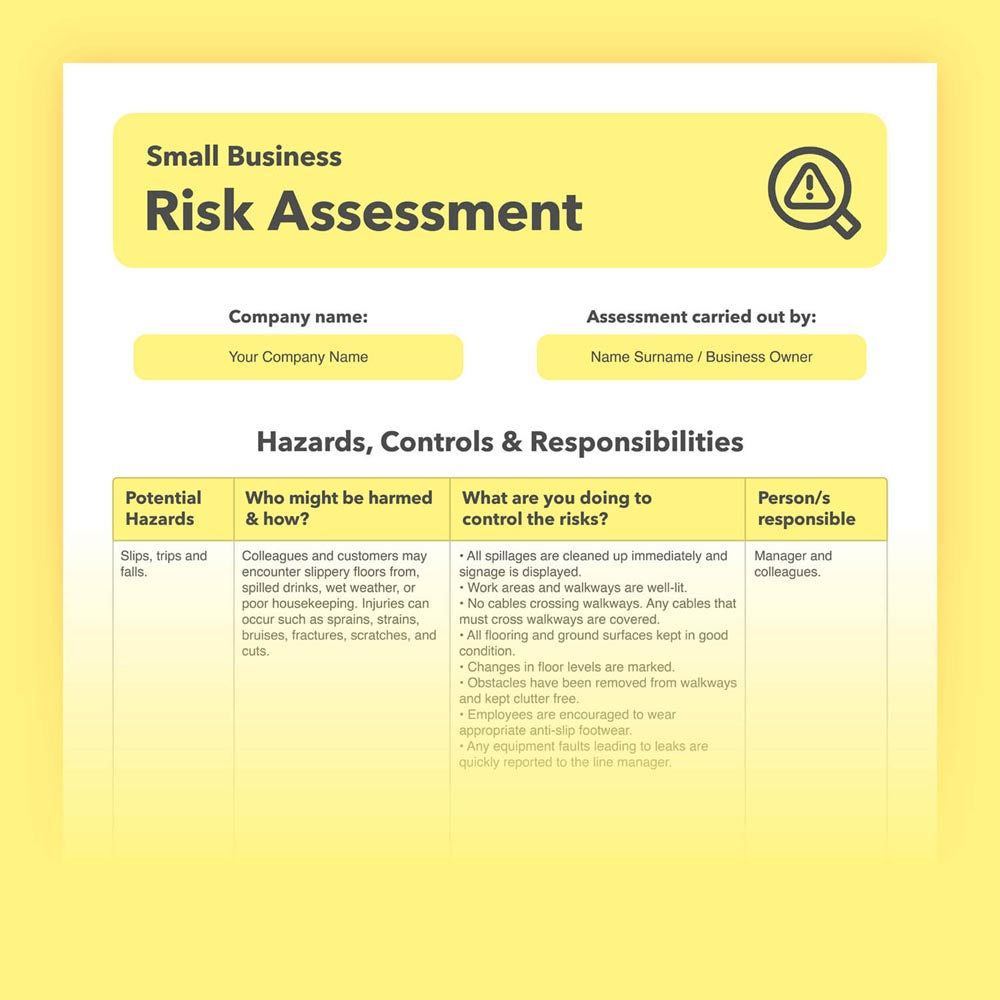
10 Essential Tips for Writing Effective Risk Assessments
Risk Assessments are a crucial part of maintaining a safe and compliant workplace. They help identify potential hazards, assess the risks associated with them, and implement measures to mitigate these risks. Here are ten essential tips for writing effective risk assessments that will ensure your business remains safe and compliant.
1. Understand the Purpose of a Risk Assessment
Before you start writing, it's important to understand why you're conducting a risk assessment. This involves recognising potential hazards in the workplace and taking steps to prevent accidents and injuries.
2. Identify Hazards Thoroughly
Take the time to identify all possible hazards in your workplace. This includes physical, chemical, biological, and ergonomic hazards. Engage with your team to ensure no potential risk is overlooked.
3. Assess the Risks
Once you've identified the hazards, assess the risks associated with each one. Consider the likelihood of an accident occurring and the severity of its consequences. This will help you prioritise which risks need immediate attention.
4. Involve Your Team

Involving your team in the risk assessment process can provide valuable insights. They are often the most familiar with the daily operations and potential hazards.
5. Use a Structured Template
Using a structured template can streamline the risk assessment process. It will ensure you cover all necessary elements systematically. If you're looking for an efficient way to get started, consider our digitally downloadable Risk Assessment Templates.
6. Keep it Simple and Clear
Your risk assessment should be easy to understand. Avoid jargon and complex language. Use clear and concise language to describe hazards, risks, and control measures.
7. Regularly Review and Update
Risk assessments are not a one-time task. Regularly review and update them to reflect any changes in the workplace, new hazards, or updated regulations.
8. Implement Control Measures
Identifying risks is only the first step. Ensure that effective control measures are implemented to mitigate these risks. Document these measures clearly in your risk assessment.
9. Train Your Staff
Ensure your staff is trained on the risk assessment findings and the control measures in place. Regular training sessions can reinforce safety practices and keep everyone informed.
10. Use Professional Tools
Utilising professional tools, such as editable PDF templates, can make the process more efficient. Our digitally downloadable Risk Assessment Templates are pre-completed and fully editable, allowing you to customise them to fit your specific needs.

Enhance Your Risk Assessments with Our Digital Templates
To make your risk assessment process even easier, check out our range of digitally downloadable Risk Assessment Templates here. These templates are pre-completed but editable, saving you time and ensuring you don’t miss any critical elements. Perfect for small businesses, they provide a structured, professional approach to risk management.
Why Choose Our Templates?
- Pre-completed and editable: Save time with ready-made templates that you can customise.
- Comprehensive coverage: Ensure all potential hazards and risks are addressed.
- User-friendly format: Easy to understand and implement, even for those new to risk assessments.
Stay compliant and keep your workplace safe with our expertly crafted templates. Visit our Risk Assessment Collection to download your templates today and streamline your risk assessment process.
By following these ten essential tips and utilising professional tools, you can create effective risk assessments that protect your employees and your business.

